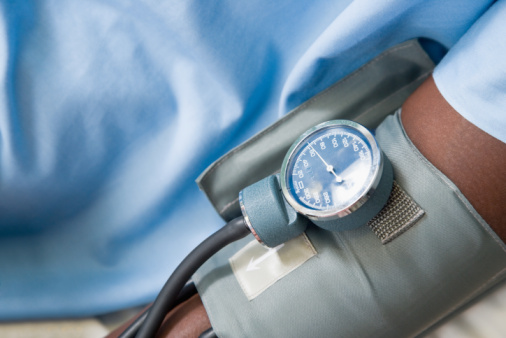
When Cody Wallace heard that he had high blood pressure, he wasn’t too worried about the diagnosis. His doctor prescribed a drug to help manage his hypertension, one that he would likely have to take for the rest of his life. But he didn’t feel sick.
“When I first started taking the medicine, I was still in denial,” Wallace says, “and doing the regular things I would do every day.” He didn’t change his diet or start exercising.
Denial is not an uncommon reaction in patients newly diagnosed with hypertension, says Stephen Sidney, Associate Director for Clinical Research at Kaiser Permanente Northern California Division of Research and doctor of internal medicine. High blood pressure does not come with physical symptoms and doesn’t interfere with daily activity.
“You don’t feel it,” Sidney explains. “It’s just a number.”
Because high blood pressure doesn’t feel like a significant health problem, but can have grave consequences, the condition is often called the silent killer. Managing hypertension is crucial to good health and longevity. Uncontrolled high blood pressure is a significant risk factor for two leading causes of death in the United States: strokes and heart attacks.
A blood pressure of 140/90 or higher puts patients at risk “for all kinds of nasty illnesses,” Sidney says, including kidney failure and peripheral vascular disease, a condition where blood flow to the legs and arms is restricted by narrowed arteries.
Sidney directs a new project at Kaiser Permanente’s Division of Research that is designed to test the best way to treat hypertension patients like Wallace, who is African American and a Kaiser patient.
Ultimately, the project aims to reduce the disparities in rates of hypertension between African Americans and whites. One-third of all Americans suffer from hypertension, but many more African Americans suffer from hypertension than whites. Nationally, African Americans are three times as likely as whites to suffer from strokes, despite efforts to increase awareness and blood pressure monitoring over the past decade. “The prevalence of hypertension in blacks in the United States is among the highest in the world,” wrote researchers from the American Heart Association in a 2012 analysis, “and it is increasing.”
Not only are African Americans more likely to have high blood pressure, but they are less likely to have the condition under control. Rates of uncontrolled high blood pressure have dropped dramatically among patients at Kaiser over the last decade, from 80 percent to 40 percent, Sidney says. But the disparity between African Americans and whites remains at 4 percent.
One project of the study, called Shake, Rattle and Roll, will try to erase hypertension disparities in the East Bay, where one-third of Kaiser patients are African American. The three steps of Shake, Rattle and Roll include helping patients to shake the salt habit, getting doctors to rattle the treatment protocol when treating African American patients and rolling out the results of the trial.
Though the exact reasons for the disparities in high blood pressure are unknown, some important differences have been noted in how African Americans react to risk factors and treatments for hypertension. African Americans appear to be especially sensitive to salt, Sidney notes. Some hypertension medications work better for African Americans than they do for people in other racial and ethnic groups. Diuretics are often used to treat high blood pressure, but they seem particularly crucial in treating African Americans with hypertension.
Researchers hope that recommending lifestyle changes and treatment options tailored to African American patients will reduce their rates of hypertension. Researchers also hope to better understand what may be an emerging threat to improving hypertension-related health disparities. Recent evidence suggests that the prevalence of strokes is increasing in younger people, age 25 to 44. Younger African Americans are twice as likely to suffer strokes compared to younger whites.
Kirsten Bibbins-Domingo, an associate professor at UCSF and internist at San Francisco General Hospital, says that she has seen more strokes among her young patients. “We know that many things have changed over time,” Bibbins-Domingo says, pointing to rising rates of childhood obesity, young adults who weigh more, and higher blood pressure and cholesterol.
But little is known about exactly why such increases occurred. Bibbins-Domingo is leading the efforts to analyze medical records to determine which factors young stroke patients have in common. “We know that will translate into lower rates of stroke over time,” she says.
Understanding what risk factors can be changed helped patient Cody Wallace. He decided to take his hypertension seriously after his sister died of cancer and his mother began to suffer from dementia that was likely brought on by a stroke. He knew what he had to do—modify his diet and exercise habits. Now he walks around Oakland’s Lake Merritt every morning and eats more healthfully—and his blood pressure is back to normal. “I feel a lot better,” Wallace says.
Sidney says that regular monitoring of blood pressure is also an important and relatively easy way to prevent strokes, as that is often the only way people know they have high blood pressure.
Wallace also has some advice for people newly diagnosed with high blood pressure: “You really need to listen to your hypertension signs. Even though you don’t feel sick, they actually mean something.”





